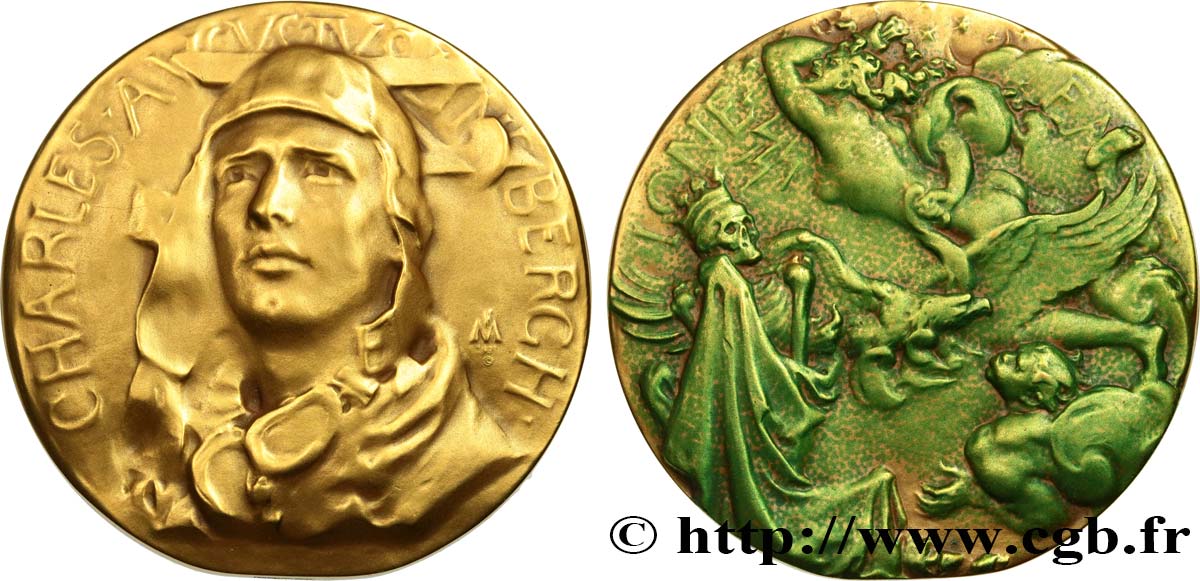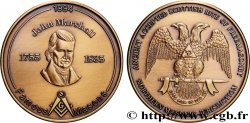fme_630987 - UNITED STATES OF AMERICA Médaille, Charles Lindbergh, the Lone Eagle
120.00 €(Approx. 128.40$ | 103.20£)
Quantity
Add to your cart

Type : Médaille, Charles Lindbergh, the Lone Eagle
Date: 1931
Metal : gilt bronze
Diameter : 67,5 mm
Orientation dies : 12 h.
Engraver Frederick William MacMonnies (1863-1937)
Weight : 219,75 g.
Edge : lisse + MEDALLIC ART CO. NY
Coments on the condition:
Patine hétérogène avec des concrétions vertes au revers. Petite usure sur certains hauts reliefs
Obverse
Obverse legend : CHARLES. AVGVSTVS LINDBERGH..
Obverse description : Tête de face, coiffé de son casque de pilote, avec un avion à l’arrière plan, signé : M / 1931.
Reverse
Reverse legend : LONE - EA.
Reverse description : Représentation allégorique de la Mort, du vent et de la foudre, s’acharnant sur un aigle aux ailes éployées.
Commentary
La médaille a été commissionnée par la “Society of Medalists”, société qui fut formé en 1930 et était une organisation de collectionneurs basé à New York dans le but d’aider à l’émission de médailles de qualité. Il s’agit de la 4e médaille d’une longue série.








 Report a mistake
Report a mistake Print the page
Print the page Share my selection
Share my selection Ask a question
Ask a question Consign / sell
Consign / sell
 Full data
Full data



